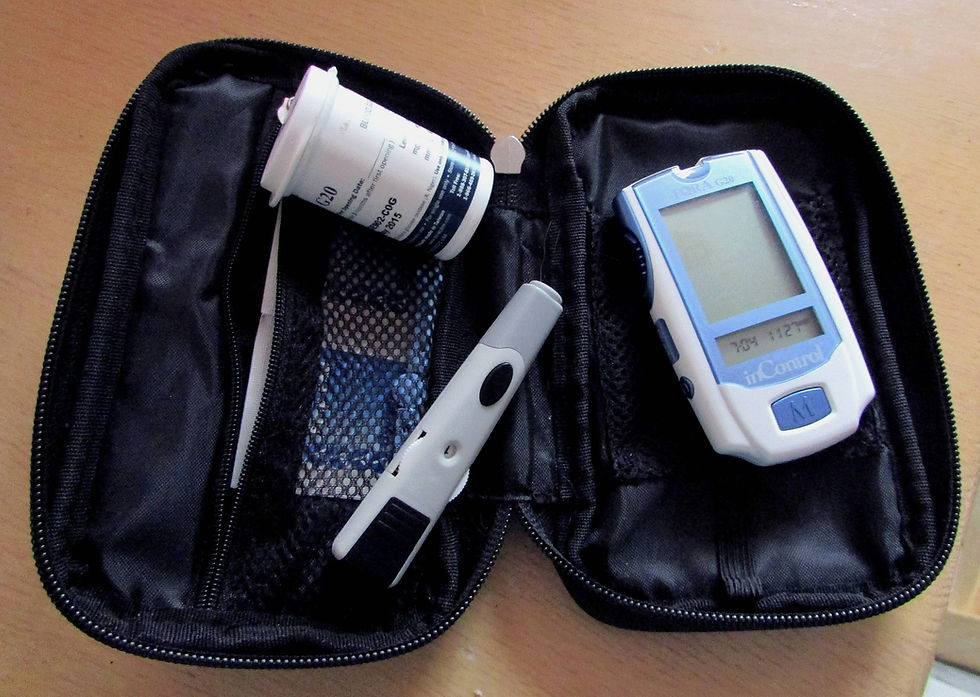Blog Title: The Hidden Faces of Diabetes: My Journey With Type 3c and the Other Types You May Not Know
- Bonita Payton
- Apr 5
- 3 min read

When most people hear the word "diabetes," their minds immediately go to Type 1 or Type 2. These are the most commonly diagnosed forms, but the reality is that diabetes comes in many forms—some lesser-known and often misdiagnosed. Understanding these variations is crucial, not only for early diagnosis and treatment but also for increasing awareness of how complex diabetes truly is.
As someone who has lived with Type 3c diabetes for over 25 years, I know firsthand how overlooked and misunderstood this condition can be. My diagnosis was misclassified in my medical chart for years, which created ongoing problems with insurance coverage. Even now, most insurance companies do not have proper coding or understanding for Type 3c, despite it being more dangerous than Type 1 in many ways. Doctors often have to code Type 3c as Type 1 just so patients like me can receive insulin—which we depend on to live.
I wear a Dexcom G7 continuous glucose monitor 24/7 because my blood sugar levels can shift from one extreme to the next in an instant. For those of us with Type 3c, it's a daily battle that requires constant monitoring, vigilance, and advocacy.
💉 Type 1 Diabetes (T1D)
What it is: An autoimmune condition where the immune system attacks the insulin-producing beta cells in the pancreas.
When it occurs: Usually in children, teens, or young adults, but it can develop at any age.
Treatment: Requires lifelong insulin therapy and regular blood sugar monitoring.
🥗 Type 2 Diabetes (T2D)
What it is: The most common type, caused by insulin resistance.
When it occurs: Most frequently in adults, but increasingly in children due to lifestyle factors.
Treatment: Often managed through diet, exercise, oral medications, and sometimes insulin.
🤰🏾 Gestational Diabetes
What it is: A type of diabetes that occurs during pregnancy.
Risk factors: Hormonal changes during pregnancy that affect insulin effectiveness.
Treatment: Careful monitoring, diet, exercise, and sometimes insulin. It usually goes away after delivery but increases the risk for Type 2 diabetes later in life.
🔍 Let’s Talk About the Less Common Types
🧬 MODY (Maturity-Onset Diabetes of the Young)
What it is: A rare, hereditary form of diabetes caused by a single gene mutation.
Who it affects: Often misdiagnosed in children and young adults as Type 1 or 2.
Treatment: May be managed with oral medications instead of insulin, depending on the subtype.
⚒️ Type 3c Diabetes (Pancreatogenic Diabetes)

What it is: Diabetes resulting from damage to the pancreas due to surgery, trauma, chronic pancreatitis, or cancer.
Why it's unique: Patients lose both insulin and pancreatic enzymes, making management more complex.
Treatment: May require insulin and enzyme replacement therapy.
My experience: I've been living with this type for 25 years. Because it's not widely recognized, it has caused delays and errors in care and coverage. The reality is that our bodies do not produce insulin at all and need 24/7 monitoring—just like a Type 1, yet we face more uncertainty and less support.
🧠 Type 3 Diabetes (Alzheimer’s-Related)
What it is: Not an officially recognized type, but a term used by researchers to describe the link between insulin resistance in the brain and Alzheimer’s disease.
Ongoing research: Suggests that impaired glucose metabolism in the brain may play a role in neurodegeneration.
✨ Why This Matters
Understanding the different types of diabetes leads to better treatment outcomes, early diagnosis, and improved quality of life. Misdiagnosis can mean someone isn't getting the right kind of care. Whether you or a loved one has diabetes, or you're just eager to learn more—knowledge truly is power.
💬 Let’s Start the Conversation
Do you or someone you know live with a lesser-known type of diabetes? Share this post to spread awareness and comment below with your experiences. Let's break the silence and bring education to the forefront.



Comments